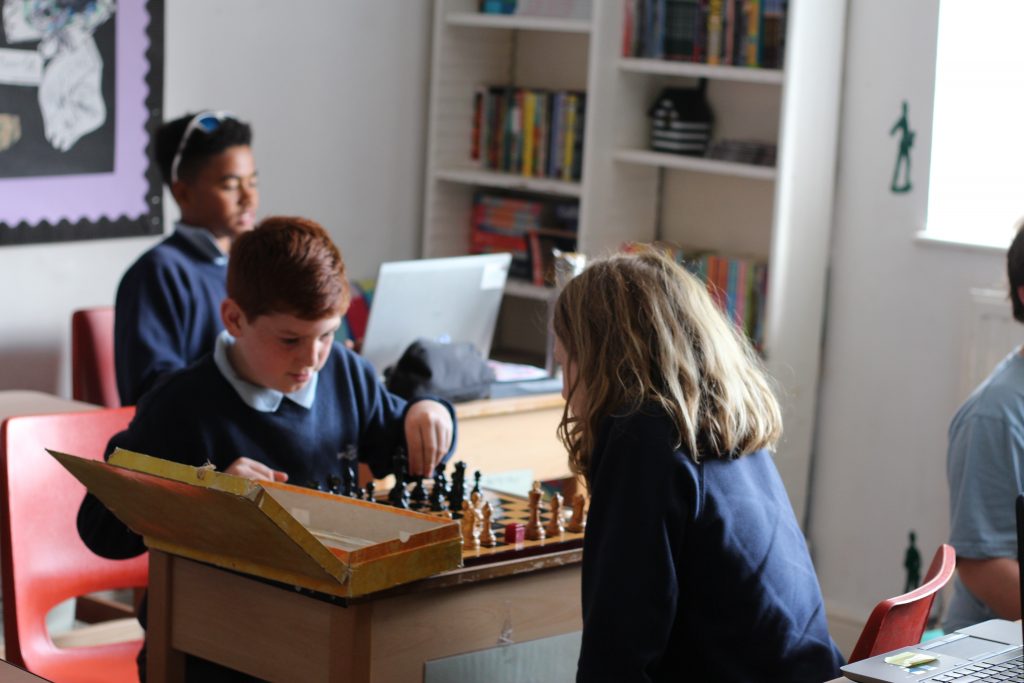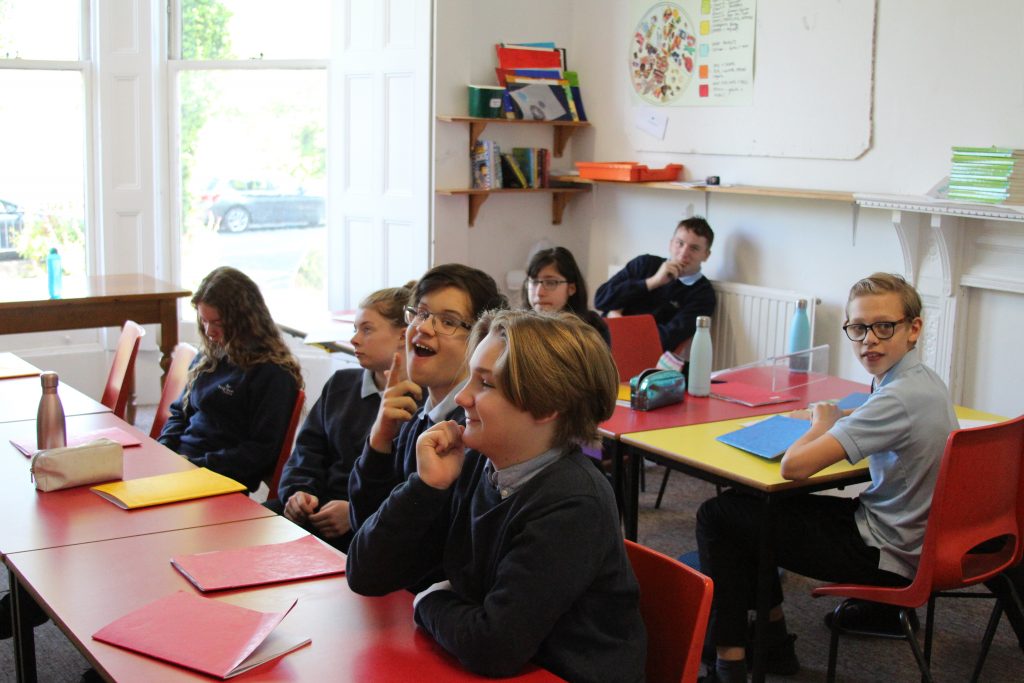Page Audio Transcript:
Our approach to teaching and learning
Most of our interventions are embedded in the curriculum and the normal school day so that pupils are not removed from class to receive this input. This produces a sense of inclusion and reduces a perception of being different.
Small groups of about 10 pupils with a staff ratio of 1: 5
Pupils with a higher degree of need are in a smaller group with a higher staff ratio.

Work is highly differentiated and modified to meet each pupil’s needs.
Pupils are supported to develop confidence and independence.
There is a low stimulus environment to avoid distractions.
Many dyslexic pupils have previously fallen behind across a spectrum of subjects, not because they are incapable of engaging, but because the subjects have been delivered in a way that is text-based and too fast. Teaching methods heavily reliant on literacy can exclude dyslexic pupils from large areas of the curriculum.
Our teachers endeavour to teach the whole curriculum in a dyslexia friendly way which aims to minimise the negative effects of dyslexia and other issues as far as possible so that they do not act as a barrier to effective and exciting learning.
Dyslexia friendly methods are multi-sensory and wide-ranging, harnessing all senses and include dynamic interactions, physical activities, kinaesthetic learning, employing visual images and animations, drama, audio and video clips, mind-maps, dialogue, educational software, chunking, and the power of narrative

As dyslexics sometimes have problems cementing knowledge into their memories, concepts must be systematically revisited and ideas recapped.
Study skills, including over-viewing, mind-maps, room pegging, mind palaces, dramatic imaging, mnemonics, drama, dance, paired teaching, “teach a teddy” (the student actively teaching what they are learning to another party), the Brainbooster program, are actively and specifically taught.
Extra time is given to understand concepts, remember knowledge and gain skills.
Extra time is given to evidence academic achievement in set tasks and internal assessments.
How do we adapt the curriculum and learning environment?
We follow a modified National Curriculum
We do not teach a second language to allow room for other focused interventions
We focus our curriculum to enable students to succeed in obtaining the maximum possible qualifications
We provide opportunities to prepare for a wide range of qualifications accessed by the pupil at the appropriate level (GCSE, Level 1 and 2 qualifications, including BTECs, Functional Skills and various Entry Level certificates)
We tailor the curriculum according to the needs of individual pupils, for example, some pupils focus on functional and life skills.

We provide a wide range of specific interventions, including:
- Daily Dyslexia Intervention slots – every day in the primary department and half an hour a day for four days a week in the secondary department
- Literacy educational software like Nessy Reading, which can be used in school and at home and which tracks the pupils’ progress
- Mathematical educational software programmes such as Numbershark and My Maths, which also track the students’ progress
- Other literacy interventions including, Toe by Toe, Power of Two
How do we identify and assess pupils with SEN?
A selection from:
- Educational Psychologists’ reports
- Specialist teachers’ reports
- Experienced teachers’ referrals
- Various dyslexia and dyscalculia screeners
- Occupational Therapists’ reports
- Speech and Language Therapists’ reports
- Paediatricians’ reports
- Clinical Psychiatrists’ reports
- Education Health Care Plans (EHCPs)
- CAT tests are used in entry to the secondary school
